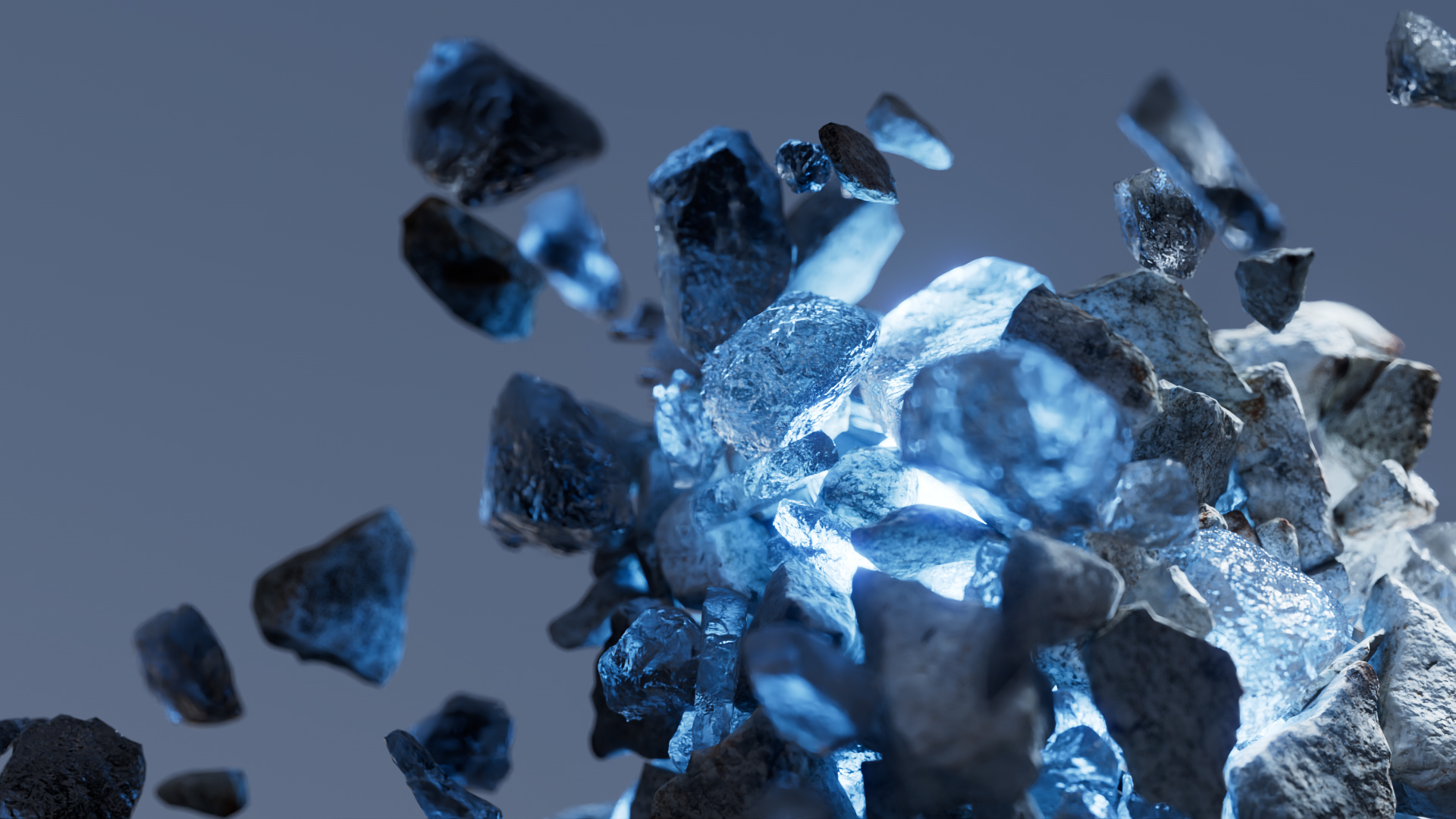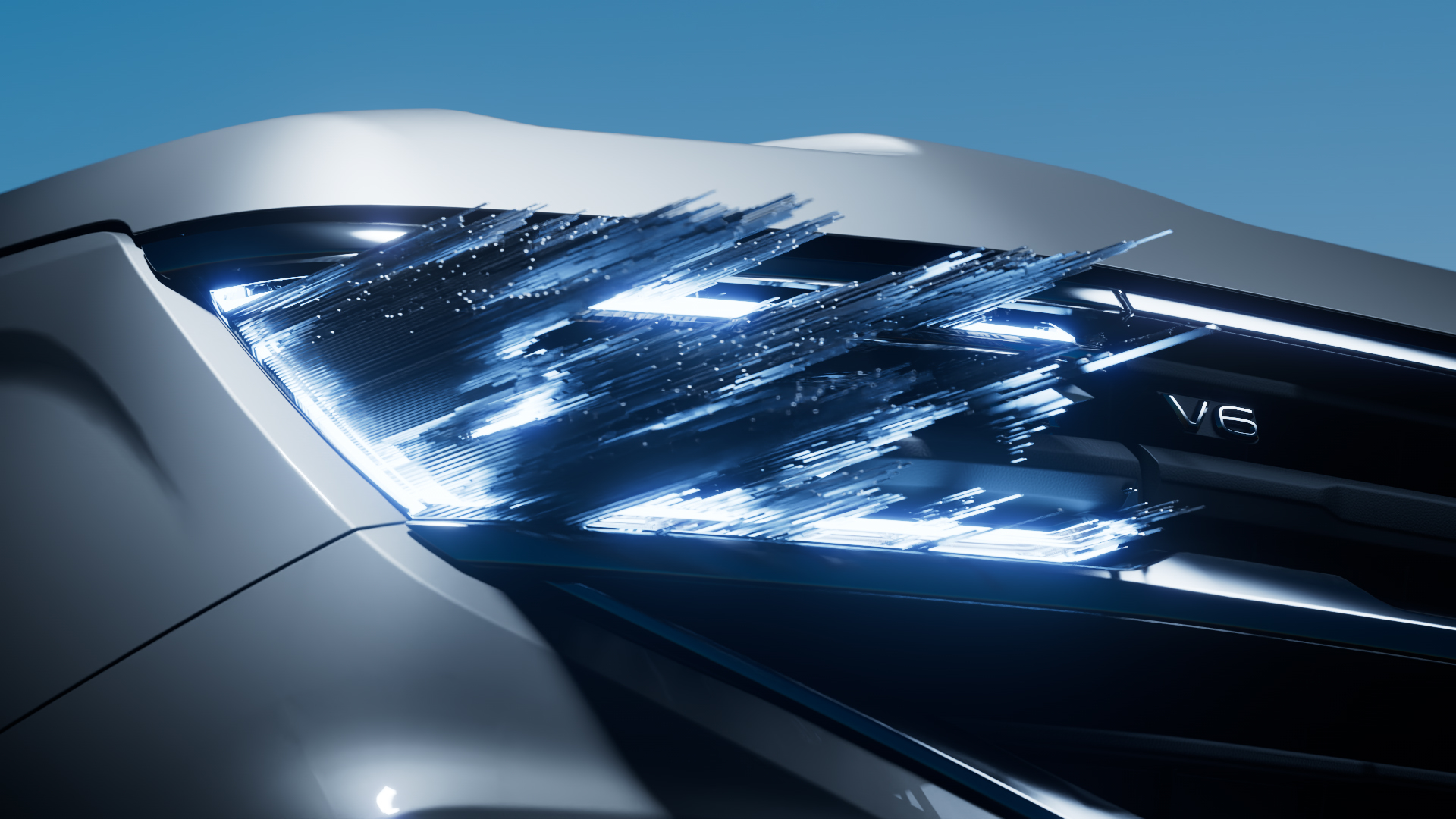
Volkswagen Amarok’s 3D Reveal Campaign TACTYC Studio on using Maxon One to capture the spirit of off-road freedom.
Art directors, motion designers and 3D artists Marius Eder and Tristan Fischer are busy forging their own creative path. After founding TACTYC Studio in January 2022, their abstract approach to visual storytelling struck a chord with clients looking for a fresh approach to product visualization and brand messaging.
Among those clients was Effect Etage, a German company working with Volkswagen’s commercial vehicle division. In need of a 3D animation partner, they tapped TACTYC to help realize visualizations for the new Volkswagen Amarok launch campaign.
Using Cinema 4D, Houdini and Redshift, Eder and Fischer worked closely with Effect Etage and Volkswagen’s teams to create a series of eye-catching teasers for the campaign, which abstractly highlighted the Amarok’s origins, qualities, features and spirit. “We’re really passionate about having design at the center of our work and having the freedom to show and develop our own creative ideas,” says Fischer.
Telling Abstract Visual Stories
Both Eder and Fischer like to invest time in personal projects that allow them to experiment with tools and techniques, refine their craft and express complex ideas through abstract visual storytelling. Their transformative approach was the catalyst for TACTYC to pivot to full CG shorts and abstract 3D simulations and visualizations that proved a great fit for the Amarok project.
The project came to them as a direct result of their submissions to the 2022 36 Days of Type challenge, which they released as a series of 3D animations on TACTYC’s Behance and Instagram channels. “We were amazed at the response from other artists and the many new clients, mainly fashion brands, asking us to work with them,” Fischer recalls.


For the Volkswagen project, Effect Etage wanted to create a slow reveal of the vehicle over a period of several weeks, releasing only short teaser clips of new design details on social media. To make the visuals more interesting, they asked TACTYC to produce a series of twelve abstract simulation shots that blended into a different design feature, like lights, emblem, wheels, etc.”
For the concept, Volkswagen referenced Manvsmachine’s MINI Cooper spot, as well as the Amarok’s wolf-like spirit and premium lifestyle features. “The task was to combine the Amarok’s origin as a tough, offroad commercial vehicle with luxury appeal,” Eder says.
Tackling Creative Challenges
Throughout the project, the main creative challenge was how to express complex ideas using abstract imagery, and TACTYC, Effect Etage and the VW team spent a lot of time exploring ways to best to present different features.
For example, they decided that the most elegant solution for revealing the Amarok emblem in the vehicle body while simultaneously showcasing the finish, was to use an abstract particle simulation that transitioned into a liquid.



“We used Houdini for simulations, and Cinema 4D and Redshift for further lighting, shading and texturing,” Eder says, explaining that alembic files or Redshift proxies allowed them to exchange project files with other team members. Redshift’s progressive RenderView was particularly integral for quick look development.
“Creating the particles in Houdini, the Redshift particle parameters allowed us to shade and adjust all the particles at the object level,” says Eder. “Then, we exported this huge number of particles using Redshift proxies to Cinema 4D, so everything looked consistent all along the pipeline.”
Volkswagen specifically requested that the animations showcase the Amarok’s new, adaptive Matrix LED headlights, so a crystal simulation was chosen to represent the clarity and intensity of light rays.

Eder explains that they created it procedurally in Cinema 4D with Matrix objects and Effectors with a Fields setup, which made it easy and fast to adjust to client feedback. And Redshift’s ability to read the Field colors from the Matrix Object meant that they could create complex animations that the materials would react to.
Looking to the Future
The campaign rollout began with the release of teaser clips, culminating in a complete reel comprised of all the animations. Delighted by client feedback and amazed by the many artists who congratulated them and asked about specific effects, Eder and Fischer agree that the tough timing and expectations of quality and quantity pushed them to improve their way of working and helped them develop their own look.
“I’d say we're most comfortable with things that you can’t create in real life.”– Tristan Fischer
“We came up with few new cool tools and presets that we still use for other projects,” says Fischer. “I also think we got better at lighting, an important part of this project, and Cinema 4D and Redshift helped with that.”
Looking to the future, both are confident that their focus on abstract simulations and visualizations is not just right for them, but also timely. “I’d say we're most comfortable with things that you can’t create in real life,” says Fischer. “We love it when clients come to us and say: ‘Ok, let's do crazy or really cool stuff.’”







